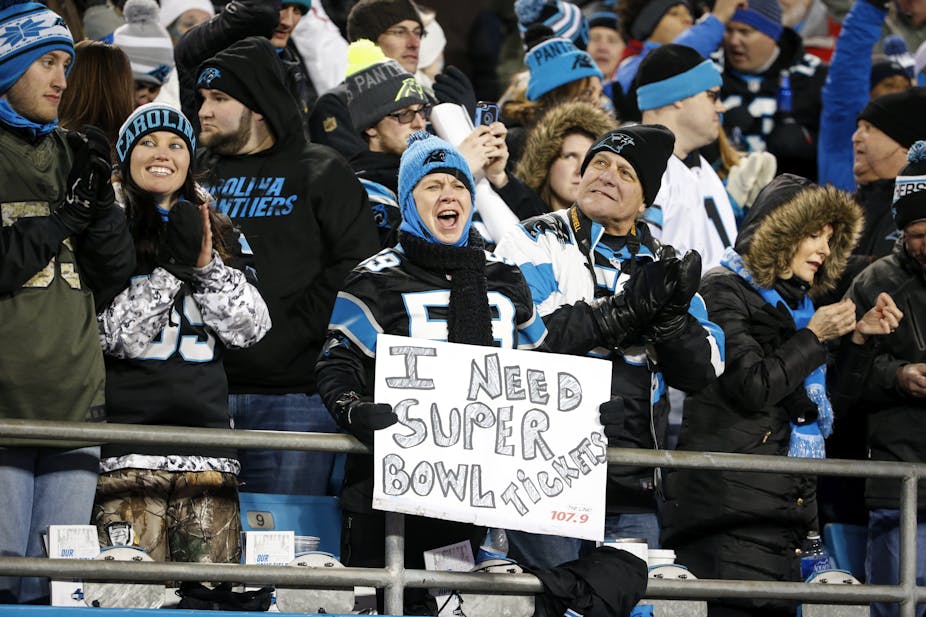American football’s Super Bowl Sunday is the biggest annual event in US sport, and one of the biggest in the world. Some of the Super Bowl’s typical numbers are mind-blowing: a domestic TV audience of 114m people; 25m tweets posted during a game; companies paying US$4.5m for a 30-second slot during one of the game’s advert breaks; and fans watching on TV spending an average of $78 each just on snacks to eat during the game.
But it’s not a sporting institution in rude health. Some observers believe that American football is dying a slow and painful death. Several reasons for this have been identified, although one in particular is posing a distinctive set of challenges for the sport: the rise of the millennial generation, a group which in the US now outnumbers baby-boomers by 10%.
Born between 1980 and the mid-2000s, millennials have become the most influential consumer generation in history, according to some commentators. A US government report has characterised the group as being highly diverse, unattached to organised politics and religion, linked by social media, burdened by debt, distrustful of people, in no rush to marry and optimistic about the future.
As consumers, the behaviour of millennials manifests itself in numerous ways: for example, by how they prioritise access to resources over ownership of them. They also live life online, through the worlds of Instagram, Snapchat and Twitter. Recent research suggests on average millennials spend more than 11 hours per week watching clips on YouTube that last no longer than two or three minutes. The Super Bowl be warned: Sunday’s NFL extravaganza lasts four hours (three and a half hours of the game and 30 minutes of half-time entertainment).

The threat to American football is no illusion. In a recent study, four out of five millennials stated that they were less trusting of the NFL than basketball, baseball, hockey or NASCAR. Out of those surveyed in the study, 61% identified the NFL as a “sleazy” organisation, while 54% saw it as being anti-gay. In another study, teenage interest in the NFL was found to have fallen from 26% to 19% over the last two decades. The study also identified that in Canada, this figure is even starker with only 14% of teenagers following the Canadian Football League. One explanation put forward to explain this is that millennials do not like the monoculture associated with mainstream sports.
Breaking free of rules
There’s something rather “old school” about the NFL and the Super Bowl – and not in a cool way. Millennials are a spontaneous bunch which baulks in the face of football’s regimented leagues and competitions. They function in a world of social media where there are no rules, regulations or structures of the kind that organised sports generally place upon them. This is one of the reasons why we have seen sports ranging from parkour to base-jumping and BMXing to wake-boarding increase in popularity over the last decade.
Sports like American football therefore have to adapt to a dramatically different marketplace. Nowhere is this more apparent than in the way fans are engaged with. In the past, the sport’s frontline was stadium terraces, or the bars where fans congregated prior to games or to indulge in post-match rumination. Now it is the short videos you find on YouTube, Instagram, Snapchat and others.
The new frontline of fan engagement is social media and mobile devices, with millennials multi-tasking, sharing and actively collaborating with people, many of whom they may never have met face-to-face. There have already been calls for sports to begin marketing themselves in different ways to millennials. Moreover, one recent report strongly asserts that brands and marketers must prepare themselves for multi-platform consumption among millennial consumers.
Thus, we are entering a period during which sports and their stakeholders must move quickly if they are not to miss out on a generation of sports fans. The race is on to identify the right formula for capturing the attention of Millennials through engaging content. For instance, L.A. Galaxy has done away with traditional press releases targeted at the media. Instead, Galaxy posts relevant news on YouTube, giving direct, unedited access to its followers.
For people still unsure what the millennial world of sport is all about, try experiencing this weekend’s Super Bowl through the eyes of DJ Khaled. Some of you will already be asking “who?” which means you are probably, like me, either a baby-boomer or a member of Generation X. Khaled is a social media sensation, the love child of Twitter’s 140 characters and Snapchat’s posts that last for just 24 hours. Millennials can’t get enough of him. Check-out his coverage of Sunday’s game as it will possibly be unlike anything you have experienced before. And get used to it, this could be the Super Bowl’s future.

